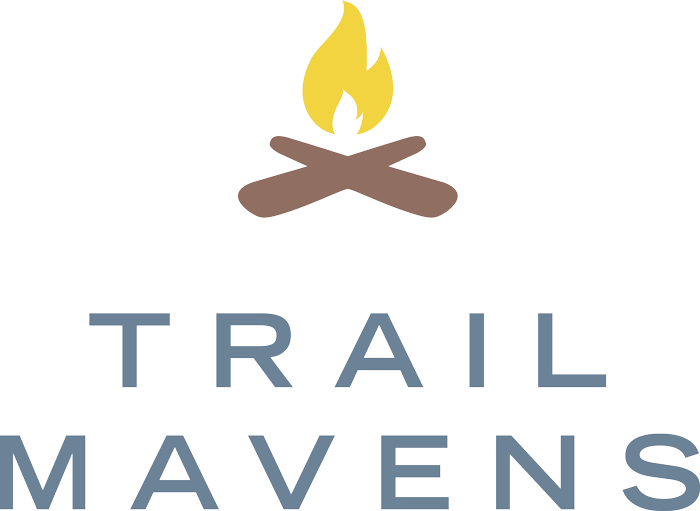Three Days in Desolation Wilderness | Planning & Packing
In my last blog post all about the touchy-feely of my three-day solo backpacking adventure, I alluded to sharing the nitty gritty of my trip. Here's what you need to prep for a solo jaunt in Desolation Wilderness!
THE ROUTE
Step one in planning any backpacking trip is to choose where you're going. I knew I wanted to cover ground I hadn't seen before, so after studying my trusty map and reading some online trip reports, I decided I'd pitch my tent by Lake Aloha for both nights. It sits just over seven miles from the Echo Lake trailhead, which felt like the right distance to hike in on day one and out on day three. As an added bonus, I'd be able to cover more distance on day two because my pack would be considerable lighter without my tent, sleeping bag, pad, etc. inside it.
As you plan your trip, be sure to consider: how many miles & how much elevation are you comfortable covering each day? Is this a good time of year to go, weather-wise? Do you want to do an out-and-back hike, a loop hike, or a point-to-point hike? (The latter will require some friends and a second car, or perhaps a bus ride.) Finally, in places like Desolation Wilderness and Yosemite, one must always remember...
THE PERMIT
If you're going in in the off-season (September 30 - the Friday before Memorial Day) or midweek, permits are easy. Because my trip was a Monday - Wednesday in October, I could have chosen any destination in Desolation! After planning my route, I visited Recreation.gov to reserve my permit for a very reasonable $5/person/night, plus a flat $6 reservation fee.
Summer weekends are another story. In the quota season (the Friday before Memorial Day through September 30), you're able to make online reservations between six months and one day in advance of your trip. If you're planning ahead, you should have no problem getting a permit. If you've decided to visit Desolation last minute, it may make more sense to visit Recreation.gov, plug in your dates, and see what's available (better to soften the heartbreak of planning all the details and discovering all the permits for that route are taken).
As a last resort, 30% of all permits are held back for first-come, first-served use. A valid option, but you won't be able to do too much advance planning if you don't know where you're going until showing up at one of the Forest Service stations in Tahoe.
THE PACKING
One thing you should know: I am not an ultra lightweight backpacker. I'm not carrying in cans of beans and bottles of wine, either, but given the choice between less weight while hiking and more comfort when I reach my campsite, I choose the latter. Here's what I brought with me, with asterisks marking the stuff that distinctly falls into the more weight + more comfort category:
LARGE ITEMS
Osprey Aura 65L backpack, 2.5L water reservoir, and rain cover
MSR Hubba Hubba tent
Mountain Hardwear Heratio 15
Thermarest Women's Prolite Plus
*Thermarest compressible pillow (I am the Goldilocks of pillows, I can't sleep unless it's just the right level of fluffiness)
*Alite Mantis chair (#worththeweight in my opinion)
*Trekking poles (my first time using poles, and I'm never going back)
MISCELLANEOUS
ID + health insurance cards
iPhone + headphones
MSR Hyperflow Microfilter
Desolation Wilderness map + printed permit
Black Diamond Storm headlamp
Digital wristwatch
Adventure Medical Kits Ultralight & Watertight First Aid Kit .5
Toothbrush, toothpaste + floss
Sunscreen + lip balm
Duct tape + p-cord bracelet
Pee rag, a.k.a. pee-kerchief
Toilet paper, small bottle Purell, and extra plastic bag for used TP
*Trowel (most people would use a rock, but when I need to go, I need to go, and the trowel makes hole-digging so much faster)
*Field Notes book and pen (I wanted to do some writing and reflecting)
*Kindle (to fill the long hours after sunset and before sleep)
CLOTHES
Prana Halle hiking pant
Icebreaker wool tee
Lightweight fleece + puffy jacket
Rain jacket
Warm hat
Warm leggings
One extra pair wool socks + undies
Cotton tee to sleep in
Baseball hat
Sunglasses
COOKING
Bear Vault 450 Solo
Snow Peak Trek 1400 Titanium
Snow Peak Titanium spork
Swiss Army knife
MSR Pocket Rocket stove, fuel canister, lighter, and extra matches
*Mini bottle Dr. Bronners soap (I always wash my hands and face before bed, making sure to stay 150 ft. away from water)
STUFF I FORGOT OR REGRET NOT BRINGING
Nalgene bottle. I had the bladder in my backpack to hold drinking water, but I like being able to make myself a hot water bottle when I go to bed, especially when no one else is in the tent to generate body heat. I tuck it by my feet, chest, or against my femoral artery to stay warm.
Sea to Summit 10L folding bucket. Definitely a luxury item, but bringing it means you only have to walk down to the lake once, instead of going back and forth, and it's very lightweight.
A dog. Not that I have one, but I saw several other solo female backpackers out with their pups, and it made me really jealous. Imagine having something to cuddle with at night, and a nonjudgmental listener you can talk to on the trail during the day?
What's on your must-pack list for backpacking adventures? Did I miss anything you always bring?
Want to hone your outdoor ninja skills before adventuring solo? Join one of our upcoming adventures.

